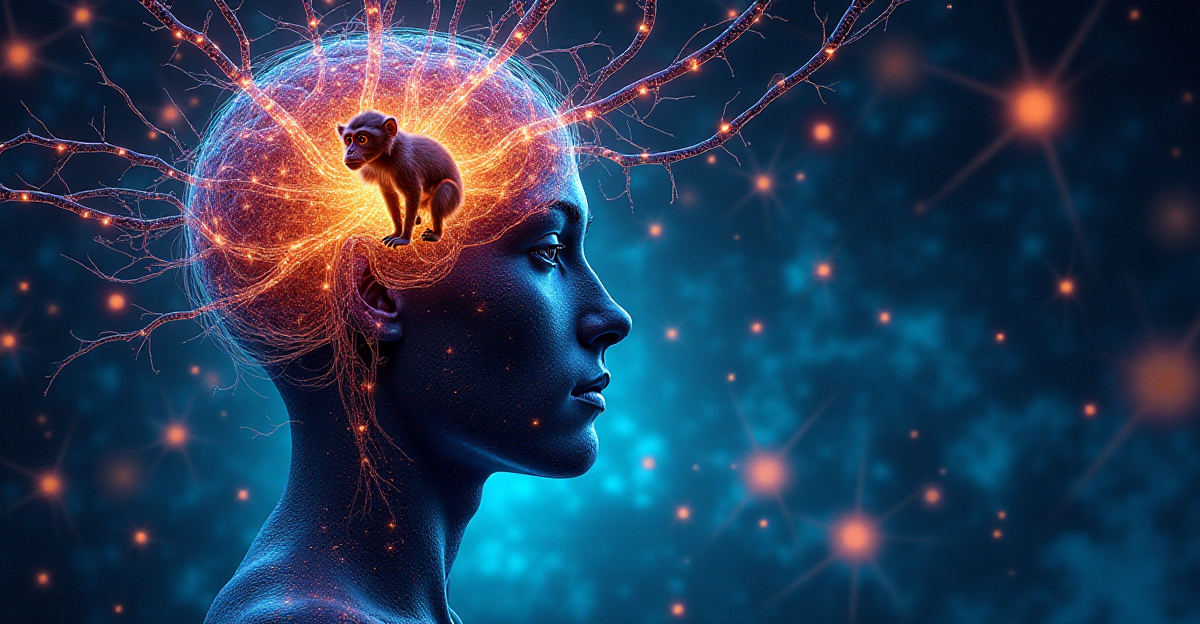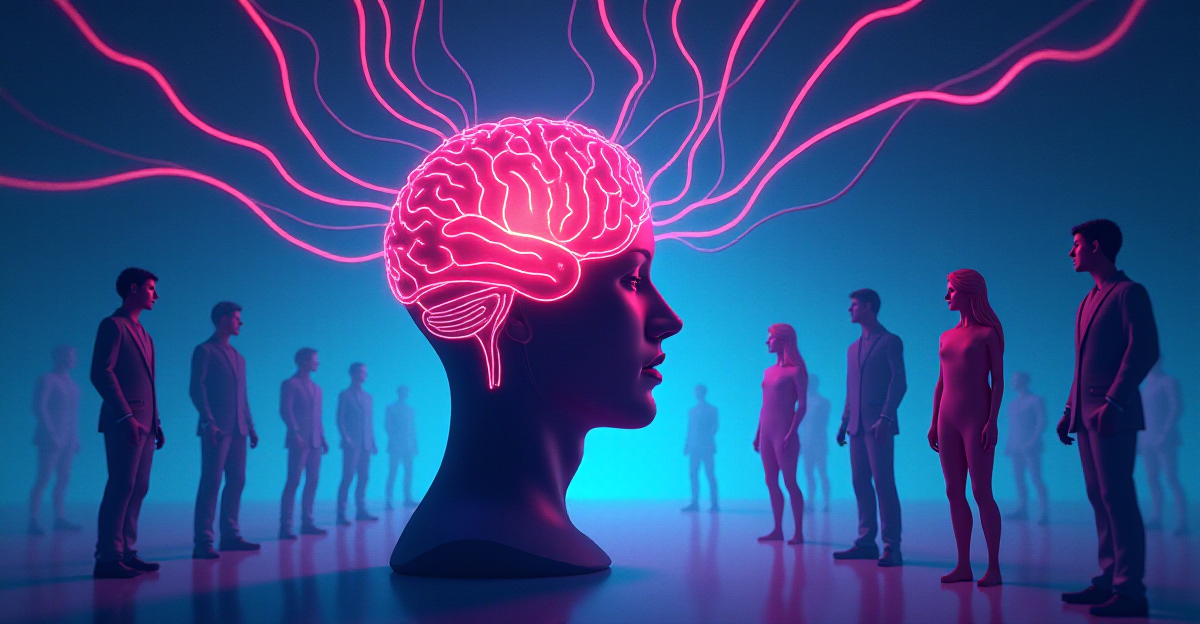Enter the realm of mirror neurons—the brain cells most likely in charge of empathy, imitation-based learning, even language development. Their discovery and possible consequences are discussed in this paper.
Table of Contents
- The Discovery of Mirror Neurons and What They Tell Us About Human Behavior
- Learning and Imitation: How Mirror Neurons Shape Our Behavior
- How Mirror Neurons Help Us Understand Others
- Extra’s:
The Discovery of Mirror Neurons and What They Tell Us About Human Behavior

Why do we have empathy with others? Alternatively, how quickly we pick up fresh skills from observing others? The finding of mirror neurons in the 1990s transformed our knowledge of the brain and our interaction with the surroundings. Found in both humans and other primates, these intriguing brain cells ignite not only when we act but also when we watch someone else behave. This amazing capacity helps us to grasp the motives and behaviors of another, so virtually inhabiting their place and seeing the world through their eyes.
Researchers looking at the motor cortex—the area of the brain in charge of movement—of macaque monkeys in the 1990s made a revolutionary finding. Observing monkeys reaching for food, researchers found that certain neurons responded in response to the activity. The fact that these identical neurons responded when the monkeys saw people or other monkeys engaged in the same behavior was very amazing, though. This implied that the monkeys were reflecting the behaviors they observed, thereby assigning these neurons the moniker mirror neurons.
The finding of mirror neurons has major ramifications for knowledge of human behavior and the function of neurology in social interaction. Our capacity to feel empathy, learn by imitation, and comprehend the acts and intentions of others is supposed to be much enhanced by these brain cells. Someone else yawns, for example, and you might catch a yawn from them as your mirror neurons are firing, mimicking the yawning in your own body. Watching a friend perform a new dance move could teach you it since your mirror neurons are activating and you can pick it via imitation. Given our learning to talk by copying the sounds and movements of others, mirror neurons are also thought to be important in language development.
One striking illustration of how connected our brains are is seen in mirror neurons. They enable us to develop close bonds with others and grasp the environment we live in. Mirror neurons abound in daily life, as seen when you offer to assist someone else in opening a door because you can feel their frustration. Imagine, too, seeing a friend laugh at a joke—you might find yourself grinning and laughing along even if you didn’t really get the joke. Your mirror neurons firing most likely reflects your friend’s emotions and generates a shared experience. Examining mirror neurons helps us to understand the intricate interaction between our minds and the social environment we live in.
Still a fascinating field of research in neurology, mirror neurons provide fresh ideas on empathy science and brain imitation. Our knowledge of these amazing brain cells helps us to better grasp our humanity and our interactions with one another.
Learning and Imitation: How Mirror Neurons Shape Our Behavior

Have you ever found how much we pick up from observing others? Right, it’s very fantastic. We make use of our senses, our intellect, and our capacity to relate to the surroundings. Unbelievably, our learning and imitation are substantially influenced by a unique kind of brain cell known as mirror neurons. These neurons are amazing since they enable us to understand and replicate what we see by acting as small messengers in our brains.
Understanding Mirror Neurons and Their Role in Learning
Special brain cells called mirror neurons engage both when we see someone else engaging in the same behavior as when we do it ourselves. Imagine yourself beginning to move along too when you see a friend pick up a new dancing step? At work, those are your miracle neurons, guiding your understanding of the motions as though you were performing them personally. We learn from others when it seems as though our brains are reflecting their behavior. Watching a chef on TV allows us to pick up a new cooking method; watching a buddy helps us learn to play a new instrument. One striking illustration of how mirror neurons function is this capacity for learning by viewing.
Imitation: From Baby Steps to Complex Skills
For imitation, mirror neurons are absolutely vital. We begin copying the people around us from the time we are born. Babies replicate their parents’ sounds, and toddlers copy the actions of adults and older children. Language development, developing social skills, and general brain development all depend on this early imitation.
We get better at copying more difficult things as we age. We can learn to replicate difficult actions, whether performing a musical piece or engaging in a sport. Imagine a small child learning to play the piano observing their teacher and trying to replicate their hand movements. Mirror neurons enable us to comprehend those seen actions and transfer them into our own physical motions. Thanks to mirror neurons, learning by seeing others is like short cuts to grasp new skills.
Could Mirror Neurons Be the Key to Empathy Science?
Finding mirror neurons has altered our perspective on human behavior, particularly with regard to learning and environmental interaction. These unique brain cells reveal the link our thoughts have to the social environment we live in. They might possibly be really important in empathy. Mirror neurons turn on when we observe someone experiencing a certain experience, therefore guiding our understanding and sharing of that emotion. Imagine seeing someone cry; you might become somewhat depressed or even wish you could be crying. This is so because your mirror neurons are firing in reaction to the emotions of the other person, so enabling emotional connection between you.
This helps us to realize that imitation and learning are not only independent activities but rather closely related to our capacity to interact and comprehend other people. Might knowledge of empathy science depend on these mirror neurons? Surely something worth thinking about!
How Mirror Neurons Help Us Understand Others

Have you ever seen someone trip and fall and experienced shock or perhaps pity? The intriguing phenomena results from a certain kind of brain cell known as mirror neurons. Our capacity for understanding and relating with people depends much on these brain cells.
Mirror neurons fire when we behave as well as when we see someone else do the same. They let us unintentionally copy the gestures, mannerisms, and even emotions of those around us, like small, internal performers. See someone smiling. Your brain’s mirror neurons will fire, nearly as though you were smiling yourself. This clarifies their pleasure and even makes you somewhat happy yourself. This is why the great relevance of mirror neurons for empathy science.
Understanding Others Through Brain Imitation
Mirror neurons help us to grasp the mental states, intentions, and feelings of others. They enable us to relate to their feelings and comprehend their behavior, therefore guiding our experience of the world via the eyes of others. Mirror neurons enable us to predict the behavior and emotions of others, therefore guiding us through social events. They are absolutely vital for human behavior since they enable us to grasp the social environment in which we live.
Imagine, for instance, that you are at a party and notice someone seems awkward. Your mirror neurons may turn on, which would make you uncomfortable similarly. This could enable you to explain their unease and perhaps even help you to respond by trying to relax them.
Mirror Neurons in Therapy
For those with disorders like autism and social anxiety, mirror neuron therapy—which aims to boost mirroring ability—may help with social skills, empathy, and communication.
Consider a therapist helping an autistic child grasp social cues by applying mirror neuron therapy. The therapist can help the child improve their awareness of social cues and learn how to respond suitably by having them replicate various facial expressions and body language. This is an interesting field of study since it emphasizes how human interaction and understanding could be enhanced by means of these brain cells.
Extra’s:
If you’re fascinated by the complexities of the human mind and how we connect with others, you might be interested in exploring other scientific frontiers that delve into the nature of our being. For instance, our “Ancient Technologies More Advanced Than We Thought” post explores ancient civilizations and their potential mastery of technologies beyond our current understanding. Additionally, our “Quantum Biology: Nature’s Use of Quantum Mechanics” article delves into the surprising role of quantum mechanics in biological processes, offering a new perspective on the fundamental building blocks of life.
For a deeper dive into the scientific research surrounding mirror neurons and their implications, particularly in the context of autism, you can explore “Reflecting on the mirror neuron system in autism: A systematic review of current theories – PMC.” This comprehensive review delves into various theories and research findings regarding the role of mirror neurons in autism. Alternatively, “The Basis for Learning by Watching: Mirror Neurons | by elaves | elaves | Medium” provides a concise and insightful overview of mirror neurons, their function, and their significance in learning by observation.












1 thought on “Mirror Neurons: The Science of Empathy and Imitation”